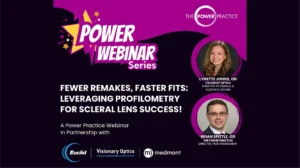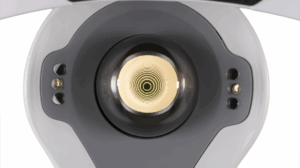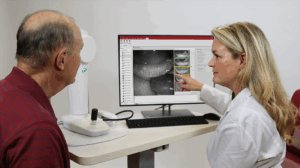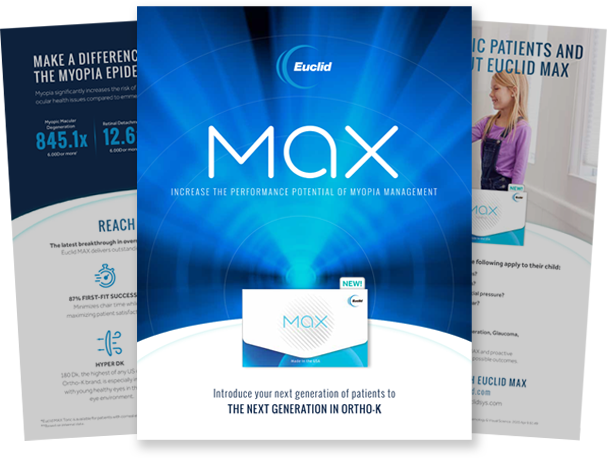Axial length measurement remains the gold standard for tracking myopia progression. While average emmetropic growth has been estimated to be around 0.1 mm/year,1 axial length elongation varies based on age and ethnicity. Using percentile tables such as Figure 1,2 we can more accurately gauge the effectiveness of our myopia management treatments.

(Figure 1. Table from Sanz Diez, P., Yang, LH., Lu, MX. et al. Growth curves of myopia-related parameters to clinically monitor the refractive development in Chinese schoolchildren. Graefes Arch Clin Exp Ophthalmol 257, 1045–1053 (2019).)
Outside of clinical research and academic settings, however, many practitioners may not have access to the necessary equipment. In these instances, cycloplegic refractions/auto-refractions may provide the next most accurate way to monitor myopic progression, particularly when utilizing atropine, multifocal soft contact lenses, or defocus contact lenses/spectacles.
Patients undergoing orthokeratology treatment present a different challenge in measuring myopic progression due to the altered corneal shape. While subjective refraction at Ortho-K follow-up visits can provide an additional data point for troubleshooting, it may not be as reliable due to examiner bias, variability from lens wear-time, and lens fitting issues such as central islands. Measuring the true, un-treated cycloplegic refraction would require the patient to discontinue Ortho-K treatment long enough for the cornea to revert back to its original shape; this is often unfeasible as many parents/patients are reluctant to do so.
For these reasons, it is important to take additional baseline measurements at the initial Ortho-K dispense appointment. This data can then serve as a reference for future follow-up visits, and includes:
- Baseline auto-refraction and refraction OVER-LENSES. This can be repeated at follow-up visits for comparison and may be more reliable and consistent compared to subjective refractions.
- Baseline auto-keratometry/topography OVER-LENSES. This measurement will allow us to determine if reduced vision is due to myopia progression vs. lens warpage/flexure.
Ultimately, axial length measurements (using optical biometry) provide the most accurate gauge of myopia progression.3 Anyone who practices myopia management at the highest level should strive to obtain this instrumentation.






